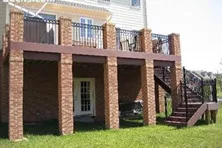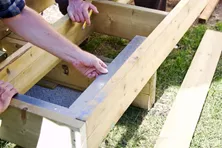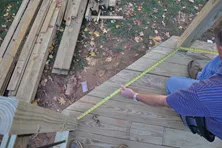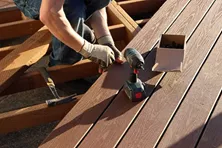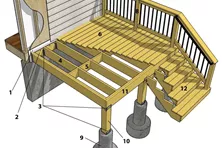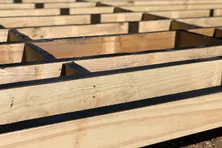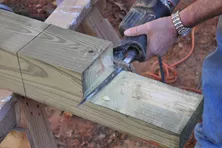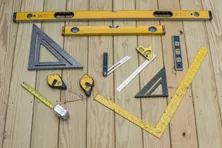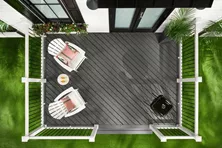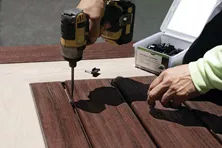Joist Tape: What Is It and Do I Need It?

Joist tape is also known as flashing tape. Flashing tape for decking is a strong and waterproof tape that will protect your deck's substructure from water. It's certainly an excellent investment, especially if homeowners want a deck that will last for a long time. Joist tape is a useful tool to add to your deck-building process, so it's definitely worthwhile.
What is Deck Joist Tape?
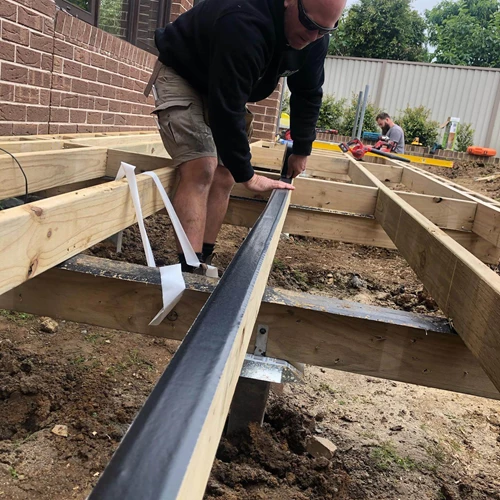
Deck joist tape is a strong adhesion tape that will protect your deck's joists from wet conditions. Wet joists will ultimately lead to mold and, eventually, rot. Joist tape prevents water from getting under your deck and into the frame.
Joist tape, or flashing tape, is extremely beneficial for your deck.
- Joist tape will increase the length of life of your deck
- It will shield your joists, beams, and rim joists from moisture penetration
- It will help deck screws and fasteners hold longer and stronger
- Joist tape will cut down your deck repair expenses
Types of Joist Tape
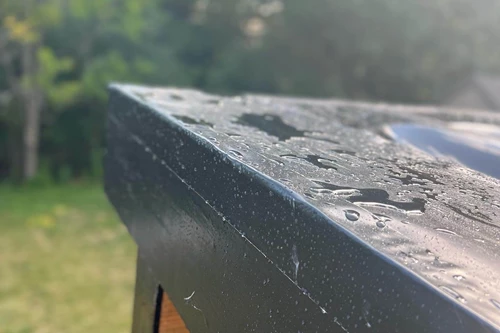
There are several types of joist tape available. Some of these types include butyl and asphalt. They are all weather resistant and form a tight barrier to prevent moisture from penetrating the deck frame. We will look at these two kinds of tape and their advantages.
- Asphalt or bitumen tape is an easy-to-use, durable joist tape made from asphalt and petroleum. Homeowners often use this kind of tape to protect their joists. It has multiple uses, including the protection of wood from moisture.
- Butyl tape is rubberized, waterproof tape commonly used in construction to seal the seams between boards. This tape is flexible, durable, water-resistant, adheres well to wet surfaces, and is self-sticking. Butyl tape is highly adhesive and thin enough to fit around deck hardware and fasteners. A butyl tape, such as Trex Protect, is long-lasting and has a 25-year warranty. It's a breeze to install, as well.
How to Use Joist Tape
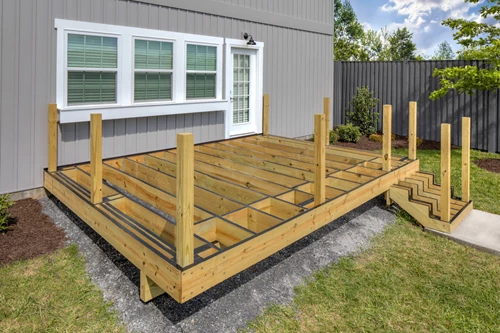
Using flashing tape for deck joists is a smart idea. Deck flashing tape gives longevity to your deck and will prevent moisture from seeping into the wood and damaging the deck's substructure.
The joists run directly underneath your deck's surface boards, and your beams, the other primary source of support, are kept dry and protected from rain and other precipitation. Deck flashing tape is also used along the rim joists to protect the outer boards that enclose your deck and on steps, stair stringers, and the ledger board. Another benefit of joist tape is that it seals the deck screws and any metal hardware underneath from moisture so they last longer and stay stronger.
The application of joist flashing is straightforward.
- Clean the joist surface, making sure it is dry and free of debris.
- Remove the joist tape backing while applying directly to the surface. Run your hand over the tape and firmly press it onto the joists and beams.
- After covering all horizontal and vertical surfaces, cut the tape to length with a utility knife.
Another advantage of butyl joist tape is the ability to install it in a wide range of temperatures. Since it is a rubberized tape and will ooze, it is best to install it when temperatures are not too hot. A trick to making it evenly lay on the surface is using your hand to firmly press the tape to the wood. Smooth as you go, and when you reach the edge of the joists, cut small diagonal slits with a utility knife so that the ends can fold over.
Why do You Need Joist Tape? Is Joist Tape Worth It?
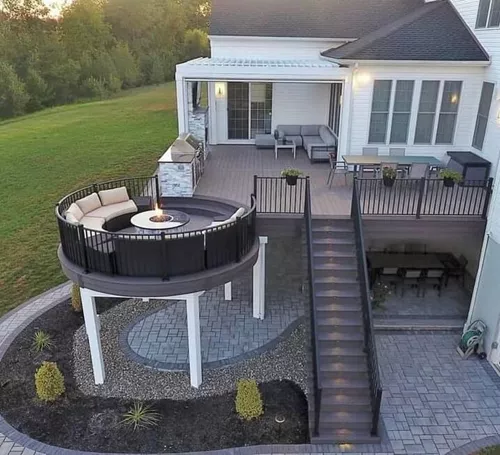
Using joist tape is absolutely worth it! Joist tape is an easy step that will shield the underside of your deck and keep moisture out for years to come. It's applied when constructing your new deck.
Using flashing tape for decking is an apt choice to preserve your deck's underside and keep the deck's structure intact and mold-free for years. It's a small investment, usually under $100, and will give you peace of mind. Use the Trex Protect materials estimator to get an estimate on the materials you need.
When you add a deck to your home, you're not just adding an outdoor living space. You're making an investment. A 400 sq foot deck can cost between $12,000 and $24,000 for composite decking and between $10,000 to $17,000 for a wood deck.
According to research conducted with builders, over 90 percent of a deck substructure starts to split and rot at around 8 to 10 years. The boards supported by that substructure are usually warranted to last about 50 years. For minimal extra costs, you can safely support your deck and its substructure for the deck's life by using joist tape.
What to Shop for in Joist Tape
Here are some things to consider when shopping for the right joist tape to protect your investment.
- Material - Asphalt and butyl are the two main types of flashing joist tape for decking. Look for a butyl tape, like Trex Protect, because it has less high-temperature oozing, endures less stain, is stickier, and can be applied in a wide range of temperatures. Butyl flashing tape also creates a tighter seal around deck screws to prevent moisture from seeping in.
- Ease of installation - Butyl tape requires little trimming because it lies directly on the boards, requiring minimal cuts and having little overlap. This makes it simple and quick to install.
- Thickness - The joist tape you select should be just about a perfect fit on the deck boards. Tape that is too thick is difficult to install because it will require trimming. Tape that is too thin may not be as durable over time.
- Price - You want a joist tape that is affordable, but you are also shopping for high quality. Remember that this is like your insurance policy on your deck substructure, so while you don't want to bust your budget on joist tape, you don't want to skimp on quality to get a slightly lower price.
- Reputation - You could choose from several brands of butyl joist tape. The chart below gives you a comparison. Trex Protect is the leading joist and beam tape on the market and it comes with a 25-year warranty from Trex.
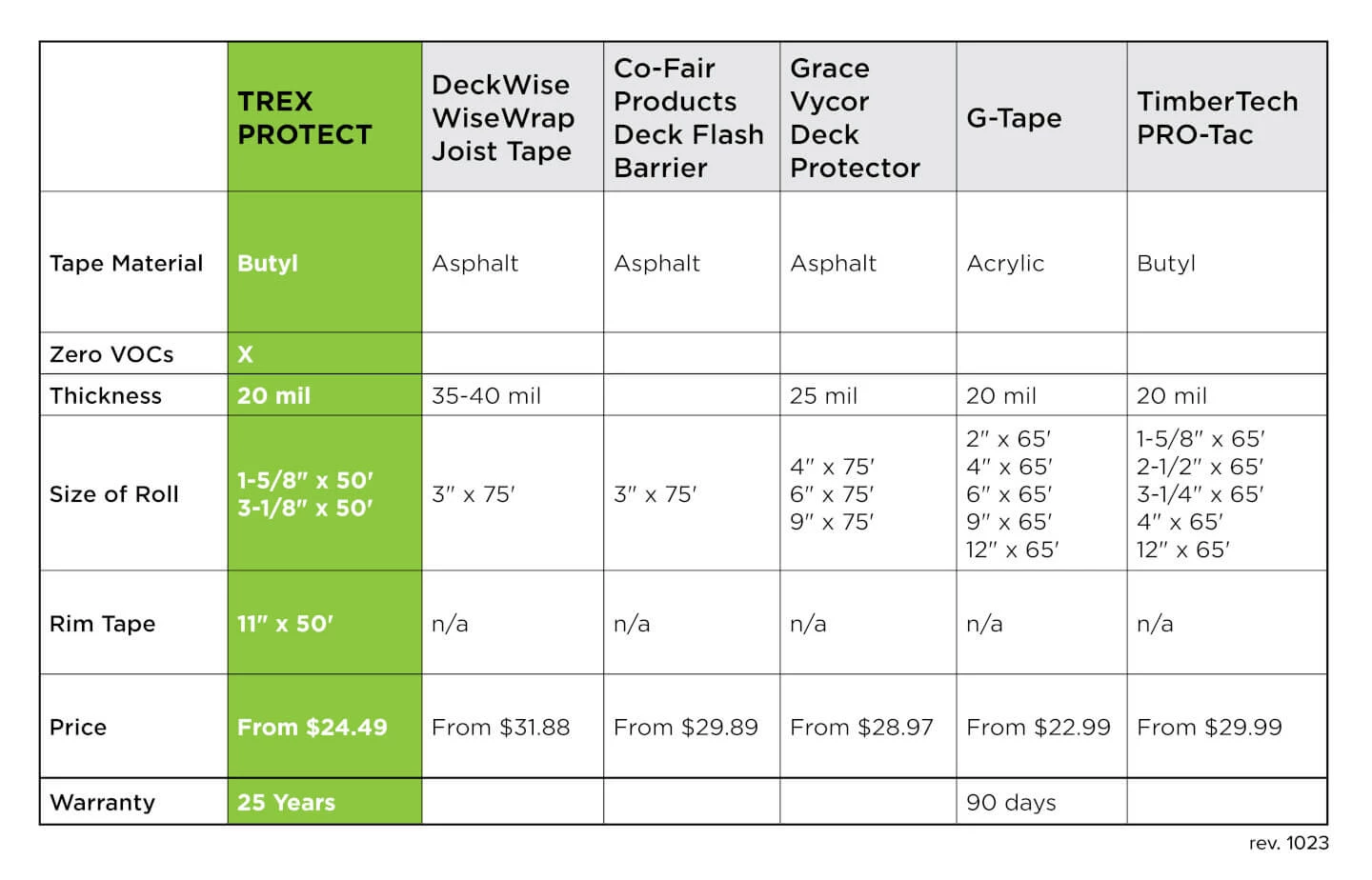
Learn More About Protecting Your Deck from Rot
How to Decorate Deck Support Columns
Browse some examples of decorative deck support posts for tall decks.
4 Tried and True Methods on How to Square a Deck Frame
Discover the secrets to perfectly squaring your deck frame. Our guide simplifies the process, ensuring your deck is flawlessly shaped and structurally sound.
How to Angle Corners and Joists
Learn how to frame a deck with angled or clipped 45-degree corners using a cantilever beam.
How to Install Decking Over Existing Concrete Slab, Patio, or Porch
Discover the best techniques to build a deck over concrete, ensuring proper drainage and stability, while creating a beautiful outdoor space.
Best Hidden Deck Fasteners
Hidden fasteners create a clean deck surface and can be used with composite, wood and other materials. Learn about hidden deck fasteners at Decks.com.
Anatomy of a Deck
A comprehensive guide to help you learn the names and understand the functions of every part of your deck.
More Helpful Resources
Explore Articles by Topic

Footings
Information related to installing frost footings for decks

Framing
Learn structural framing methods

Decking
Learn about wood and composite decking materials

Stairs
An in-depth look at the complex issue of how to build stairs

Railings
How to install guardrails and handrails to meet IRC code

Features
An overview on water drainage, benches, planters and lights

Design
The basics of deck design

Planning
Learn about permits and working with contractors

Porches & Patios
Build a covered deck to enjoy all seasons

Ledger
Proper attachment techniques

Care
Maintain your deck to maintain your investment

Materials
An overview on water drainage, benches, planters and lights
Why is Joist Protection so Important for Your Deck?
If you’ve ever seen a piece of wood left out in the weather for any period of time, you know what happens: decay. Whether through wet rot, insect damage, or mildew, the fibers begin to break down.
How to Connect a Notched Wood Post to a Beam
Learn how to install a notched wood support post to cantilevered beam connection using lag bolts, through bolts with washers or structural screws.
Deck building tools
As with any professional job, having the right tools can make all the difference.
What to Consider When Building A Wrap-Around Deck
Looking to add a wrap-around deck to your home but unsure of what the process involves? Check out this guide to learn more about top considerations when building a wrap-around deck.
Best Time to Build a Deck
People often wonder when the best time to build a deck is. Learn why building a deck in winter or fall might be your best bet.
How to Install Composite Decking
Learn about how to install composite decking. Topics include expansion and contraction issues and hidden fastener systems.
Explore Articles by Topic

Footings
Information related to installing frost footings for decks

Framing
Learn structural framing methods

Decking
Learn about wood and composite decking materials

Stairs
An in-depth look at the complex issue of how to build stairs

Railings
How to install guardrails and handrails to meet IRC code

Features
An overview on water drainage, benches, planters and lights

Design
The basics of deck design

Planning
Learn about permits and working with contractors

Porches & Patios
Build a covered deck to enjoy all seasons

Ledger
Proper attachment techniques

Care
Maintain your deck to maintain your investment

Materials
An overview on water drainage, benches, planters and lights




